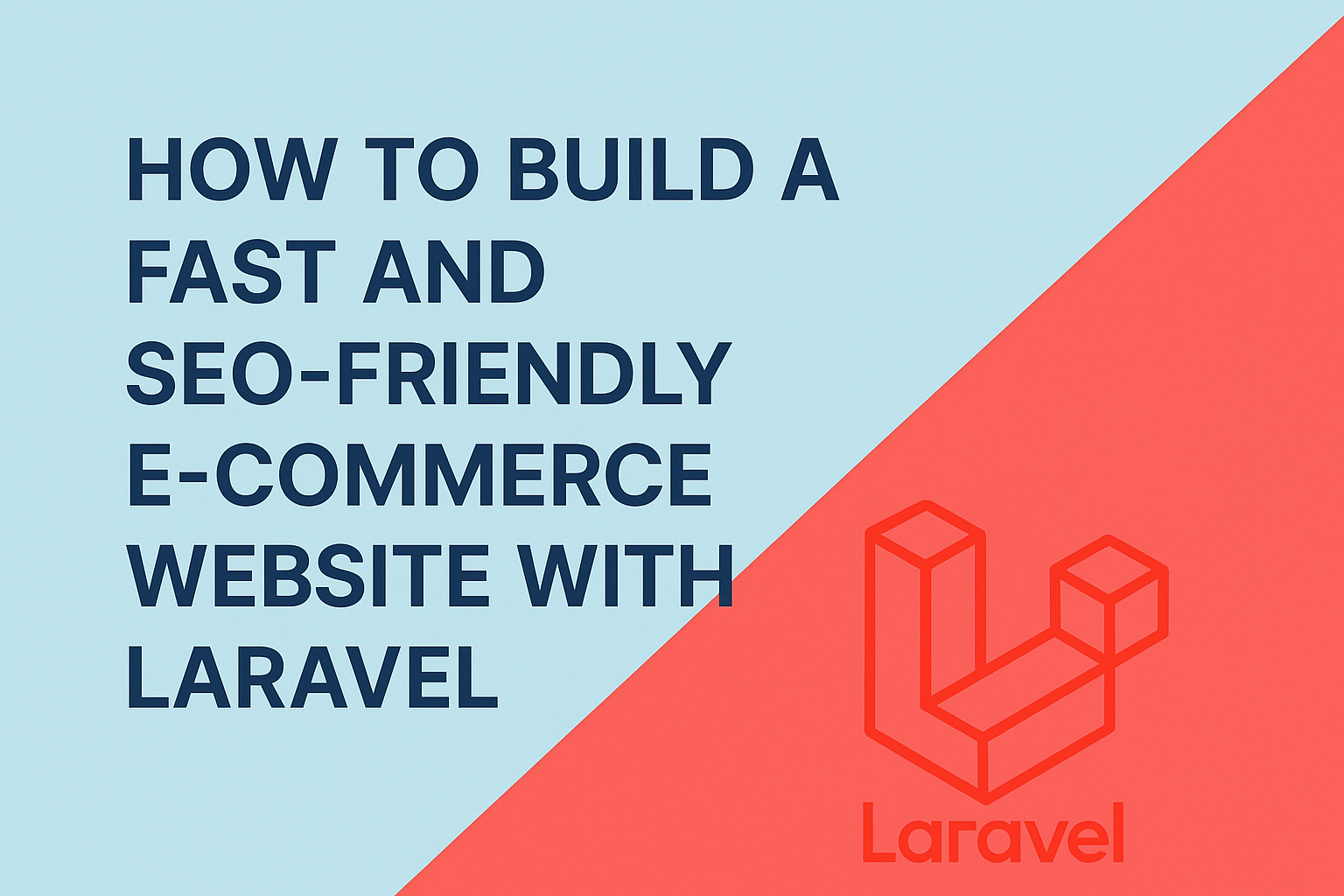Building an e-commerce website in 2025? Speed and SEO are everything! With Laravel, you can create a fast, secure, and highly optimized online store that Google loves and customers trust. In this blog, I’ll walk you through 7 practical steps to build a high-performing Laravel e-commerce website. Let’s dive in!
Why Laravel is Ideal for E-commerce Development
Laravel is among the best when it comes to e-commerce website development - but why? Because it is fast, safe, and has built-in tools to make the development process easy. You have Eloquent ORM, Blade templating, Laravel Cache and more to help you deliver a lightweight and SEO optimized online shop.
Larger companies are picking Laravel because it scales so excellently, and your online store can have thousands of products without scalability performance issues. Also, there is a large community and regular updates, making Laravel 'future-proof'.
If you are looking for the most modern, SEO optimized e-commerce option, Laravel is much better than older PHP frameworks. You can even supercharge your e-commerce with either React or Vue to create a better app-like shopping experience.
Planning Your E-commerce Site Properly
prior to writing a single line of code, its necessary to thoroughly plan. In a document or spreadsheet, lay out your product categories, payment methods, shipping rules, and general theme. A website that's well-structured is fundamental for SEO and has to be done ahead of time in terms of your URL structure and product pages.
For instance, you want to keep your URLs clean:
✅ example.com/shoes/running rather than ❌ example.com/product?id=12345
Consider whether you need things like:
- Wishlist & Cart
- Multiple payment gateways (Stripe, PayPal, Razorpay)
- Customer reviews & ratings
Outline a basic wireframe or use apps like Figma. This is all to ensure that your laravel build will be user-friendly and SEO-ready from day 1. It's important to remember that Google likes websites that are organized logically and provide a good user experience.
Laravel Speed and Security Setup
Setting up your Laravel project is now ready. You should always install the newest version of Laravel because a newer version includes performance gains and security options.
Run:composer create-project laravel/laravel ecommerce-store
Next, let’s set the cache to optimize the speed of your site:
- Route Caching:
php artisan route:cache - Config Caching:
php artisan config:cache - Cache database queries using Redis or Memcached.
For security, we should implement CSRF protection (Laravel does this by default) and use https with SSL enabled. Also, don’t neglect to use Laravel Sanctum or Passport if you are building an API based store.
A well-optimized Laravel setup can lower the page load speed by as much as 40%, which is a huge uplift for SEO rankings and the customer experience.
Developing a Simple and Modern Frontend
Your e-commerce business must have a pleasant and responsive front end. Most users shop from their mobile phones, and Google also favors mobile-first sites to rank higher in search results.
Your store can be a simple frontend using Laravel Blade templates or combined with React/Vue templates if you'd like. Be careful with animations on the page, keep the design simple, and use compressed images to improve page performance.
A few more tips for incorporating SEO-friendly items into your design:
- Use H1, H2, H3 tags appropriately for product titles and descriptions.
- Use breadcrumbs to provide hierarchy to search engines.
- Organize the layout for the search bar to be noticeable when users see the page and offer simple navigation.
An easy to use, responsive UI helps with user experience and conversion rate. And remember, Google loves sites that users enjoy staying on.
Optimizing Product Pages for SEO
Your product pages are the foundation of your e-commerce business. Here are four simple tips to make your product pages SEO-friendly:
- Unique product descriptions. Write your product descriptions instead of copying them from your suppliers.
- High-quality images with alt tags (such as 'Buy running shoes online - Nike Air Zoom').
- Use schema markup (check out Laravel packages for schema markup) to display star ratings and prices in Google searchresults.
- Ensure your product pages load quickly (3 seconds or lower) by optimizing your images and caching with Laravel.
A well-optimized product page allows you to rank for high-intent keywords such as "buy [product name online]".
Ultra Fast and Extremely Secure Checkout
If your checkout is slow or complicated, you may end up missing out on sales. Consider using Laravel Cashier or integrating a trusted payment gateway such as Stripe, PayPal, or Razorpay for seamless transactions.
Maintain simple checkout pages:
✅ Guest checkout (never force sign-ups)
✅ Address & payment detail auto-fill
✅ Steps progress indication: How many more in the checkout?
Also, double-check that your checkout page is fully HTTPS secured. Google will rank you better for being more secure, and customers typically trust you more when your site is secure.
When it comes to speed, consider enabling AJAX-based updates for the cart rather than refreshing the whole page.
Testing, Launching, and Continuing to Monitor SEO Performance
Test it all before launch. Test:
- Page speed with Google PageSpeed Insights
- Mobile-responsiveness
- SEO audit with tools like Ahrefs, SEMrush
Once you launch, submit your XML sitemap to Google Search Console, and start tracking your performance. You can use Laravel Telescope or Laravel Debugbar services to monitor server performance.
You should be updating product descriptions, posting blog entries, and doing some minor performance optimization on a regular basis each month. The more up-do-date your store is, and the faster your pages load, the better your SEO ranking will be.
Conclusion
Developing a fast and SEO-friendly website for an ecommerce shop with Laravel is not rocket science; it takes the right structure and code/controller, and customer experience. If you follow these steps, you will have a shop that loads fast, ranks high, and sells more.

